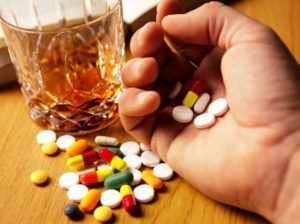Oxycodone is an Opioid prescription painkiller that is highly addictive. Research has found that its high potential for addiction and abuse is linked to its effects. In other words, how it makes the user feel.
That is, it increases the release of dopamine and hence places the user in a euphoric state. Of course, since it is meant to function as a painkiller, it gets rid of the pain too. However, the rush of euphoria, which is often compared to that of Heroine, is what gets most people hooked.
More often than not, abuse and addiction of the drug start innocently. From the prescribed use of the medicine by a patient to developing dependence to it over long term use. An issue often arises when the user becomes tolerant to the drug and ends up needing more and more of it.
Before the user knows it, they can’t function normally without it. At this stage, they are said to be addicted to Oxycodone. The measures taken to curb the increasing rise of abuse and addiction cases came in the form of a controlled release pill. This pill is formerly referred to as OxyContin.
Once ingested, OxyContin is released into the users’ bloodstream over a 12-hour period. Addicts, not happy with this, took to crushing the pill to experience a faster release. Some even mix the crushed pills in water and inject it.
What is the Purpose of Oxycodone?
 Oxycodone was introduced into the market as a painkiller. More specifically, a painkiller to help cancer patients manage pain. Later, it was also prescribed to patients experiencing pain from physical injuries, surgeries, migraines and many others.
Oxycodone was introduced into the market as a painkiller. More specifically, a painkiller to help cancer patients manage pain. Later, it was also prescribed to patients experiencing pain from physical injuries, surgeries, migraines and many others.
In short, the painkiller is used to help provide pain relief from mild to severe cases of physical pain.
Oxycodone Addiction Statistics
Oxycodone ranks as one of the top opioids that lead to an overdose death. Over nine years, that is between 1999 and 2008, the number of overdose deaths quadrupled. In 2015, over twenty thousand deaths were due to an overdose in prescription painkillers.
Of course, the increase in the sales of prescription drugs matched the rising number of deaths. This then saw an increase in admission rates at numerous rehab treatment centres.
As if the statistics aren’t worrying enough, prescription drugs are often the gateway to heroin abuse. This is because heroin is far cheaper and more available to the public than prescription drugs are.
Treatment of Oxycodone Addiction
It’s obvious that Oxycodone addiction is rampant and its consequences debilitating and life-threatening. People who are addicted to drugs often tend to cross the line and break the law in a bid to get their hand on the drug. Others, opt to lie to their doctors about the physical conditions.
A statistic taken in the year 2012 backs up the above statement. According to this statistic, the opioid prescriptions written in 2012 were at least 259 million. You don’t have to crunch the numbers to know that those are a lot of prescriptions for one year.
The wisest choice a person with a substance abuse problem can ever make is seeking treatment. By doing so, they’re finally taking control of the reins and attempting to get their lives back. Oxycodone addiction treatment is not always easy, but it’s always worth it.
Below, we take a look at how treatment looks like:
Detox
 The body tends to get accustomed to Oxycodone after some time. This is why, once the person tries to stop using the drug, they are unable to function normally. More often than not, the user will also experience painful and uncomfortable withdrawal symptoms.
The body tends to get accustomed to Oxycodone after some time. This is why, once the person tries to stop using the drug, they are unable to function normally. More often than not, the user will also experience painful and uncomfortable withdrawal symptoms.
This is where the purpose of the detox comes in. The detox is meant to remove the Oxycodone from the addict’s system. Having it done by a medical professional can ensure that the process remains safe and manageable. Please note that the detoxification process is often the first step to treatment.
Inpatient Treatment
 Choosing a rehab treatment centre is important. You want to choose one that will be suitable for the addict.
Choosing a rehab treatment centre is important. You want to choose one that will be suitable for the addict.
If you’re wondering, inpatient treatment centres are suitable for any type of case. That is, if the person is moderately or severely addicted to the drug, they can join. All that matters is that they are willing to stick to the road of recovery.
If you choose inpatient treatment, below are some of the benefits:
- Such treatment centres offer a more controlled environment.
- Having the person stay in such an environment can help cut out any triggers or stressors. Triggers and/or stressors can lead to a relapse
- Inpatient treatment centres often have the patients go through therapy sessions. These sessions help tackle underlying issues and also heal from their mistakes
- They provide support: The patient will have ample support from the people within and without the treatment centre. This means that the staff will offer support and the other patients will be encouraged to do the same to each other.
Family members will be encouraged to visit and sit in on certain sessions to offer encouragement as well. This goes a long way in aiding recovery.
Outpatient Treatment
Outpatient treatment is often sought out by those with mild addictions. It can also be the next step after inpatient treatment. It’s quite effective for people in recovery looking to go back to their life while still receiving needed support.
The support can be in the form of one-on-one therapy sessions with the counsellor. It can also be having an accountability partner to help keep them in check.
Seeking support even after inpatient treatment is nothing to be ashamed of. If anything, it’s smart because it will decrease your chances of a relapse. It will also increase your chances of living a fully recovered life.
There are three types of outpatient treatment which include:
- Intensive outpatient programs (IOPs)
- Partial hospitalization programs (PHPs)
- Standard outpatient programs (OPs)
Each type offers a certain number of hours of treatment for a certain number of days. After doing some research, feel free to choose the one you feel is best suitable and more accommodating.
